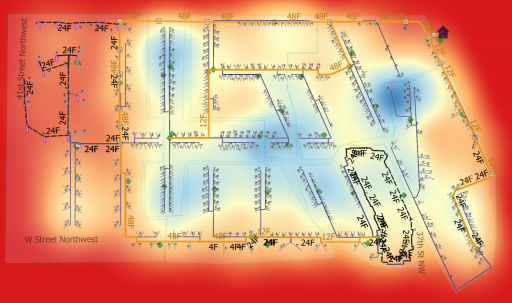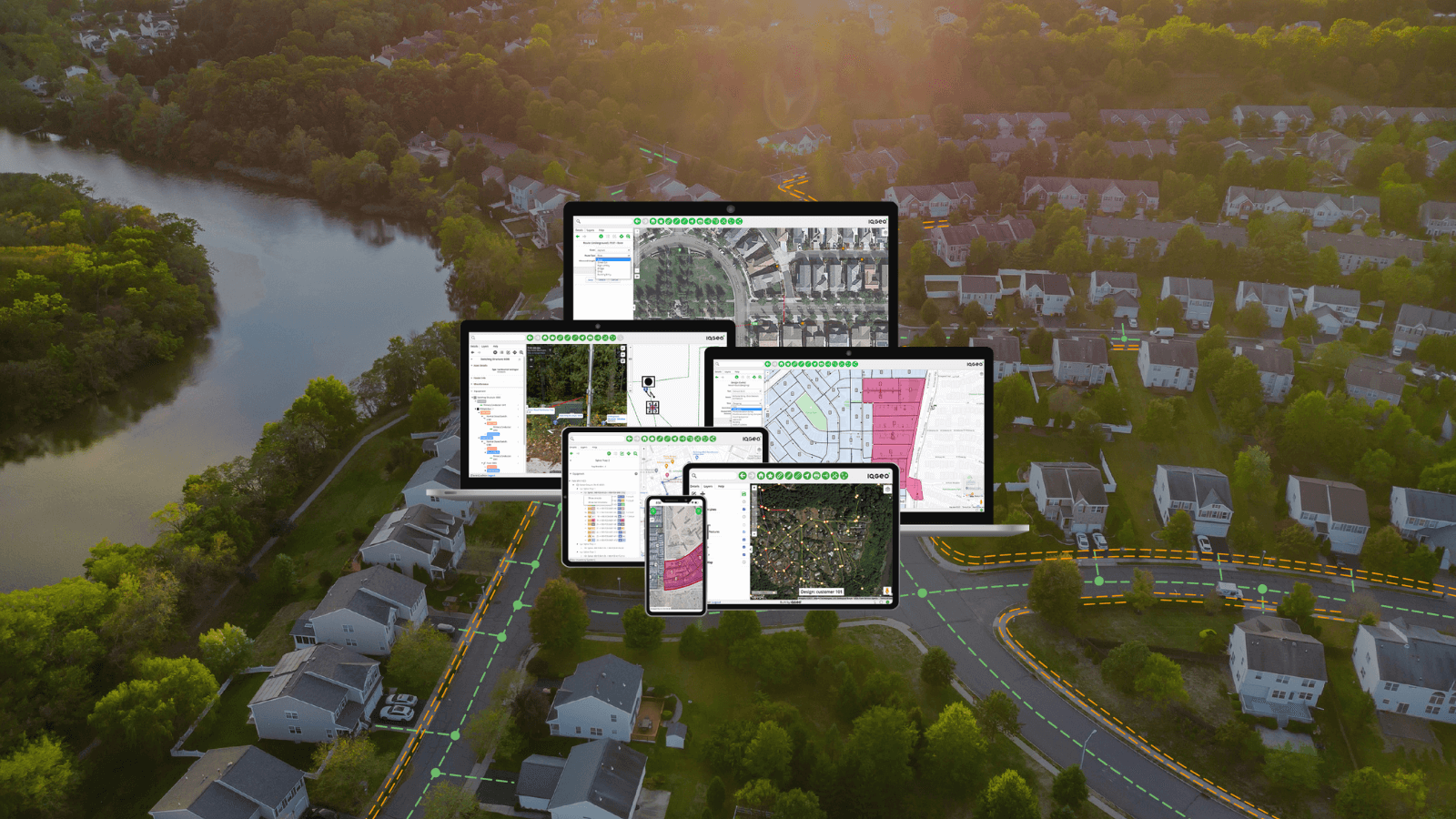FTTx (Fiber to the x) ネットワークの最適な設計は、土木工事の必要性を最小限に抑え、ダクト、ポール、マンホール、キャビネットなどの既存のインフラを最大限に活用するよう努める必要があります。このアプローチは費用対効果を高めるだけでなく、ネットワークの展開プロセスを合理化します。
グリーンフィールドとブラウンフィールドの比較
ブラウンフィールド・プロジェクトの設計には、グリーンフィールド・プロジェクトの設計とは異なる課題がある。グリーンフィールド・プロジェクトでは、設計者には多くの設計オプションがある。設計者は、新たにトレンチやボーリングを行う必要がある場所や、道路網に沿うだけの場所を決定する。
既存のインフラを再利用することで、ブラウンフィールド・プロジェクトの導入コストを抑えることができる。しかし、インフラの限界を考慮する必要があるため、事態は複雑になる。
こうした細かくて重要な作業の積み重ねが、この段階を時間と労力のかかるものにしている。この段階の最後には、設計者は実現可能で将来性のあるネットワーク設計を考え出さなければならない。そして、必要なネットワーク機器を発注するための詳細な部品表を提出する必要がある。判断を誤ると、費用と時間を浪費することになるため、ミスの許容範囲は狭い。
詳細なインプットが鍵
設計者は、前の段階と比べてはるかに詳細な入力データを必要とする。地理 情報 道路、建物(住宅数を含む)、既存のインフラストラクチャーなど、すべての情報が必要です。設計の質は、このデータの質に大きく依存する。そのため、企業は高品質のデータを取得するために多くの時間と費用を投資している。
良い設計に仕上げるためには、設計者は選択したエリアについて構造的な決定を下す必要がある。セントラルオフィス、ファイバー集中ポイント、その他のノードなどのネットワーク要素をどこに配置するか。あるいは、フィーダーや分配ポイントにどのケーブルルートを使うべきか。そして、少なくとも1本のファイバーが様々な中間経路を通ってセントラル・オフィスから家庭に届くようにする必要がある一方で、これらすべてを行うのです。
これらの決定が実行可能であることを確認するためには、現場での検証が必要である。このような検査中に、ネットワークの再設計のきっかけとなる変更が生じることがあります。配電キャビネットの位置を変更したり、配電やドロップリーチを変更したりすると、エリア全体、あるいは少なくともその一部の再設計が必要になります。その結果、設計者はエリア全体を何度も設計することになります。
役立つツールとしての自動ファイバー・ネットワーク・ソフトウェア
これは非常に非効率的であるため、自動化された ソフトウェア はこのプロセスを改善するのに役立つ。面倒でコストのかかる作業を軽減する。このソフトウェアは、自動的に前処理ステップを実行し、ネットワーク制約を適用し、インタラクティブな地理的ネットワークを生成します。このソフトウェアは、ケーブルやダクトの配線、機器の配置、部品表の作成を自動的に行います。

複数のエリアを同時に作業する自由が得られる。そうすれば、ケーブルやダクトの図面作成といった単調な作業に追われることなく、重要な決断を下す時間を確保できる。
また、ユーザーによる手動変更を統合し、ネットワーク全体を短時間で再計算することもできます。これにより、ユーザーは完全なコントロールを得ることができ、徹底的にコストを削減し、あらゆるエリアに最適な光ファイバーネットワークを設計する機会を得ることができます。
自動化された計画および設計プロセスの利点と、IQGeo がファイバー・ネットワークの ROI を最大化するためにどのように役立つかをご覧ください、 デモのご予約を予約して、当社のエンドツーエンドのファイバー・ネットワーク管理ソフトウェアを実際にご覧ください。 Comsof FiberIQGeo は、 、迅速かつコスト効率よく光ファイバーネットワークを拡張したい通信事業者やエンジニアリング企業向けの、業界をリードする自動ファイバー計画・設計ソフトウェアです。
似たような記事



 前へ
前へ







